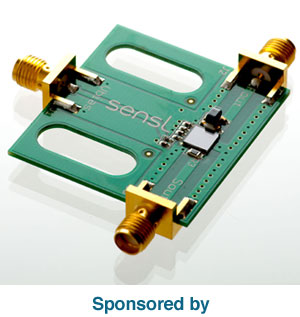

The Single Photon Avalanche Diode (SPAD) and the Silicon Photomultiplier (SiPM) are no longer just theory or for lab testing and poster presentations. Today they are being widely designed into some of the largest and most critically sensitive applications in the world. SPAD and SiPM sensors are replacing PMT’s, APD’s and PIN photodiode’s due to lower cost, improved performance, enhanced system reliability, faster time to market, and lower design complexity. In addition, SensL has pioneered CMOS compatible, high volume production of low light sensors which enables the highest level of uniformity eliminating the need for batch or individual test sheets and complex manufacturing test.
Invest 45 minutes and we will show you the world of Silicon Photomultipliers and explore why they are being deployed in large quantities in a range of applications including medical imaging, hazard and threat detection, 3D ranging and sensing, biophotonics/life sciences, and high energy physics.
This webinar offers a low light sensor masterclass in 45 minutes. Dr. Carl Jackson, SensL founder and CTO will start by explaining how a SiPM sensor is created from a large array of SPAD sensors and provide a detailed review of their operation and characteristics. He will then explore the technical differences between commonly used sensors such as the PMT, APD and PIN Photodiode showing how the SiPM and SPAD compare in critical parameters such as voltage operation, gain, noise, uniformity, and temperature dependency.
SensL is also the leading low light sensor manufacture using industry standard reliability testing methodology to ensure product quality and long term reliability. In this webinar we will share our high volume uniformity and reliability studies to give designers confidence that SiPM’s are ready to be used in next generation application designs.
Wrapping up the talk will be Wade Appelman, VP of Sales and Marketing, who will share some showcase application examples and host an interactive Q&A session.
|
MARK YOUR CALENDAR
Date: Thursday, May 21, 2015
Time: 1:00P EDT
|
Space is limited. Reserve your Webinar seat now at:
https://attendee.gotowebinar.com/register/331611973762155266
After registering you will receive a confirmation email containing information about joining the Webinar.
|
SYSTEM REQUIREMENTS
PC-based attendees
Required: Windows® 8, 7, Vista, XP or 2003 Server
Mac®-based attendees
Required: Mac OS® X 10.6 or newer
Mobile attendees
Required: iPhone®, iPad®, Android™ phone or tablet, Windows 8 or Windows Phone 8
|
Visit Photonics Media to watch past webinars on demand to learn more about the latest developments in lasers, imaging, optics, biophotonics, machine vision, spectroscopy, microscopy, photovoltaics and more.
https://photonics.com/Webinars.aspx
|
|

|
|



|